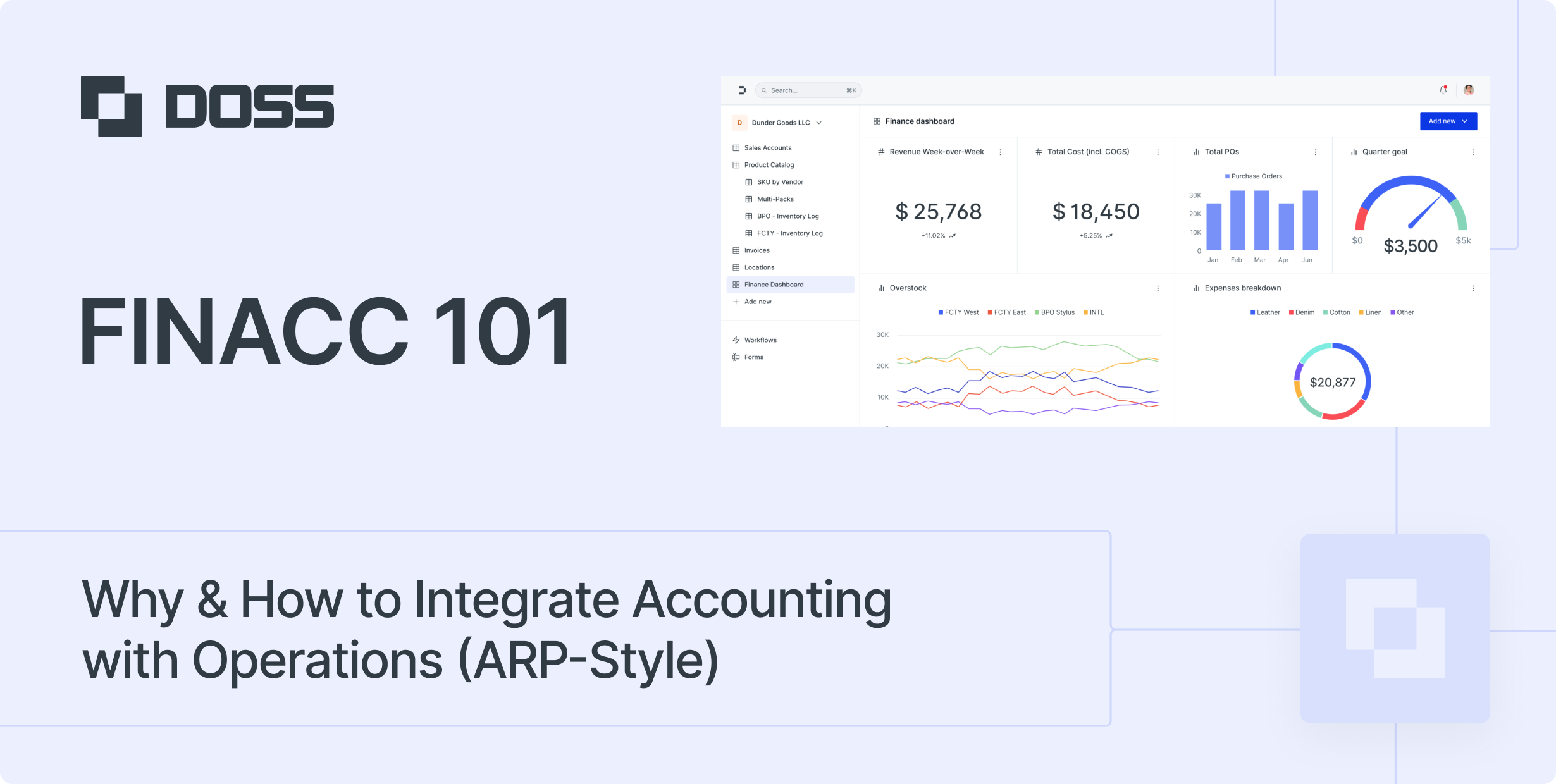Order management is how a business captures, tracks, and fulfills customer orders.
It sounds simple, and sometimes it is. But when you're selling across multiple channels, stocking multiple warehouses, offering custom pricing or configurations, and routing approvals, things can get complicated fast. Order management is where all those threads meet. It's how you coordinate customers, inventory, fulfillment, and internal approvals in real time. And when it's working well, nobody notices. When it breaks, everything downstream slows or grinds to a halt.
Why Order Management Matters
Orders are where revenue begins. Fulfillment is where trust is built.
The purpose of order management is to create a clear, repeatable flow from sales to delivery no matter what channel the order comes from, who placed it, or what it requires. Done well, it gives your operations team the information they need to fulfill correctly, finance the ability to invoice cleanly, and customers the visibility they expect.
Common challenges that stem from poor order management include:
- Double-selling inventory due to lack of stock visibility
- Shipping the wrong item or quantity because of manual entry
- Misquoting lead times when fulfillment complexity is hidden
- Losing track of who approved what and when
In other words, managing the transaction is the least of your problems. You're protecting customer experience, operational sanity, and cash flow.
Order Management vs. Inventory vs. Procurement
Order management is not inventory management. And it's not procurement. But it connects them both.
- Inventory management tells you what you have in stock and where.
- Procurement helps you source what you need, from suppliers or vendors.
- Order Management bridges the two—matching sales to supply and making sure both ends know what to expect.
For example, when a customer places an order, your OMS should:
- Check available inventory (in real time)
- Trigger a procurement request if inventory is too low
- Route the order to the appropriate warehouse or supplier
- Coordinate fulfillment, shipping, and delivery
- Trigger invoices and customer communication
All of this happens in the middle of the supply chain, not at the start or end.
The Role of Technology in Order Management
Most order management starts with spreadsheets and inboxes. And that works for a while.
But complexity scales fast. Multiple warehouses, multiple sales channels, make-to-order SKUs, drop-ship programs, or channel-specific terms can break a manual process quickly.
Modern order management systems (OMS) help by:
- Centralizing orders from different channels (e.g., Shopify , Amazon , EDI, email)
- Automating routing logic (e.g., which facility or team handles the order)
- Syncing with inventory and procurement systems to close the loop
- Supporting complex fulfillment workflows and approvals
- Keeping customers in the loop with automated confirmations and tracking
Good OMS tools are more than just order processors—they'll trigger the right steps to get the product to the customer in a timely fashion.
The DOSS Approach to Order Management
DOSS is built to handle complexity. That means high order volume, high number of SKUs, specific workflows across sales channels and integrating with other critical supply chain data (inventory, procurement, logistics) are a walk in the park.
Some of our most-used features include:
- Omnichannel Order Aggregation: Pull in orders from Shopify, Amazon, email, EDI, and more.
- Configure-Price-Quote (CPQ): Let your team (or your customers) build quotes that feel bespoke, even if they aren’t.
- Automated Sales Commission Tracking: Tie every order to its originating rep, affiliate, or influencer, automatically.
- Auto-generated PDFs and Confirmations: Send branded, format-specific documents without manual work.
- Interoperability by Design: Our OMS integrates tightly with the rest of your supply chain—procurement workflows, supplier portals, WMS tools, and accounting systems.
When order data flows across systems seamlessly, your ops team has less cleanup, and your customers get faster, more accurate service.
Does DOSS OMS sound like a system your team would benefit from using? Reach out to sales@doss.com.






